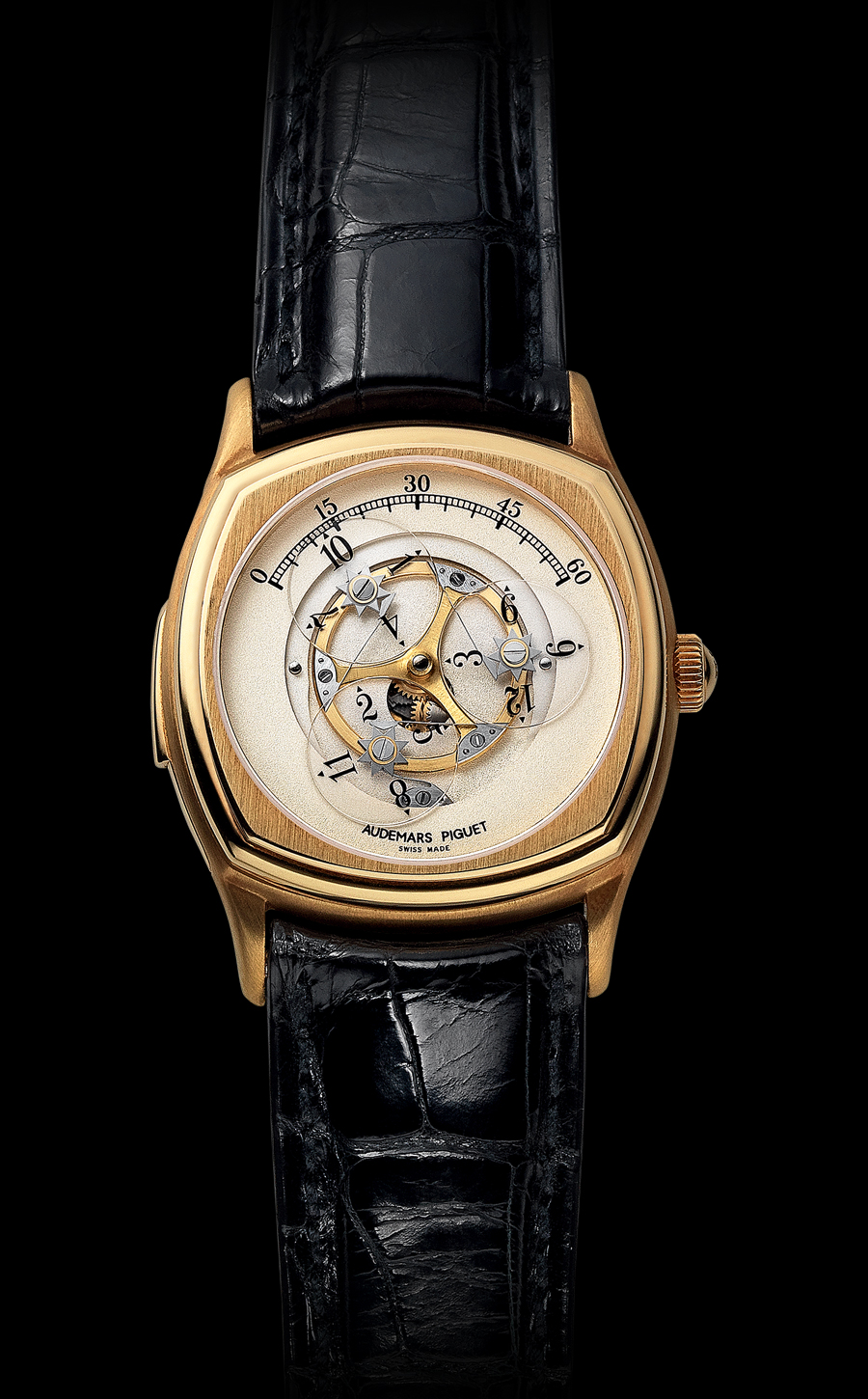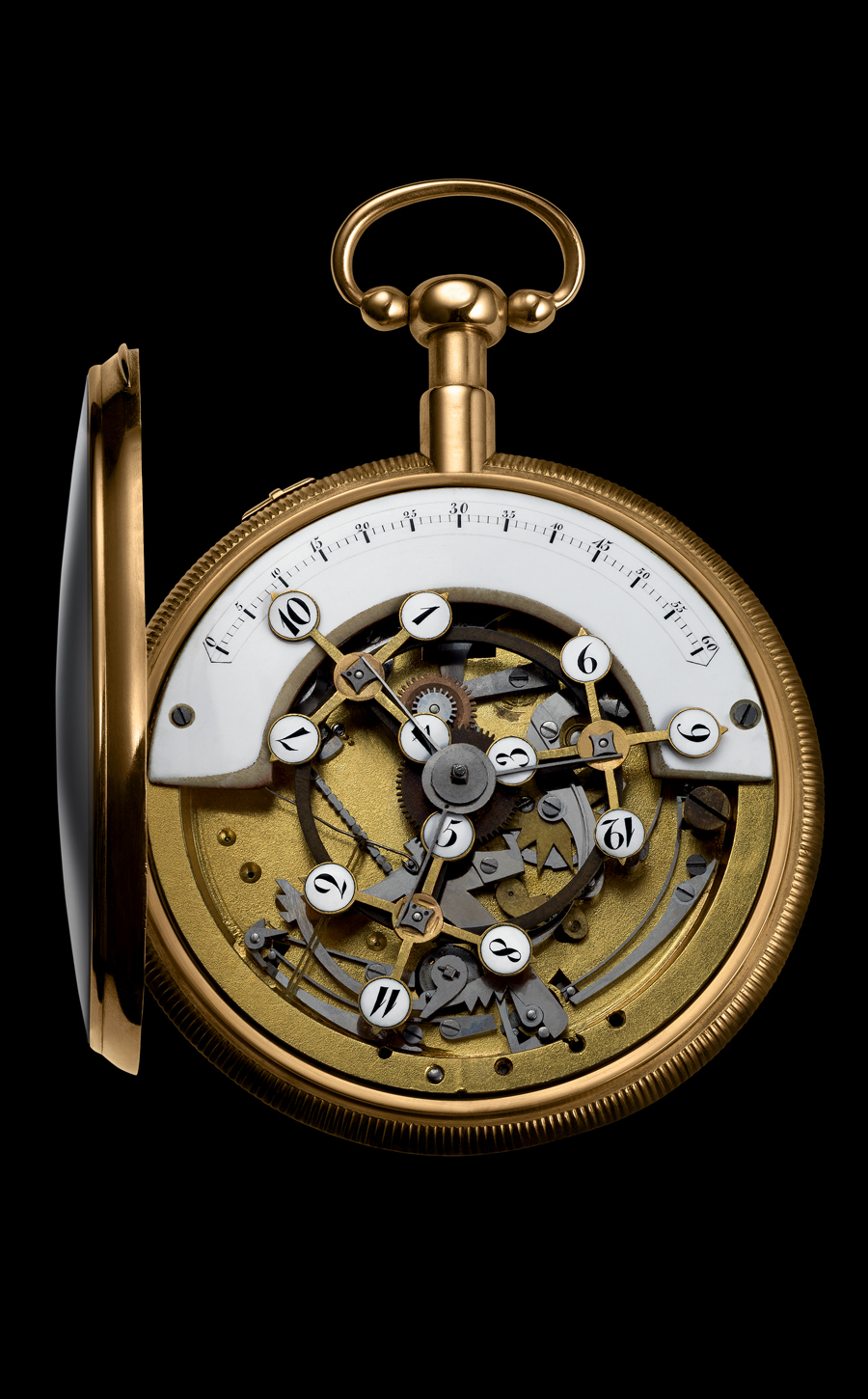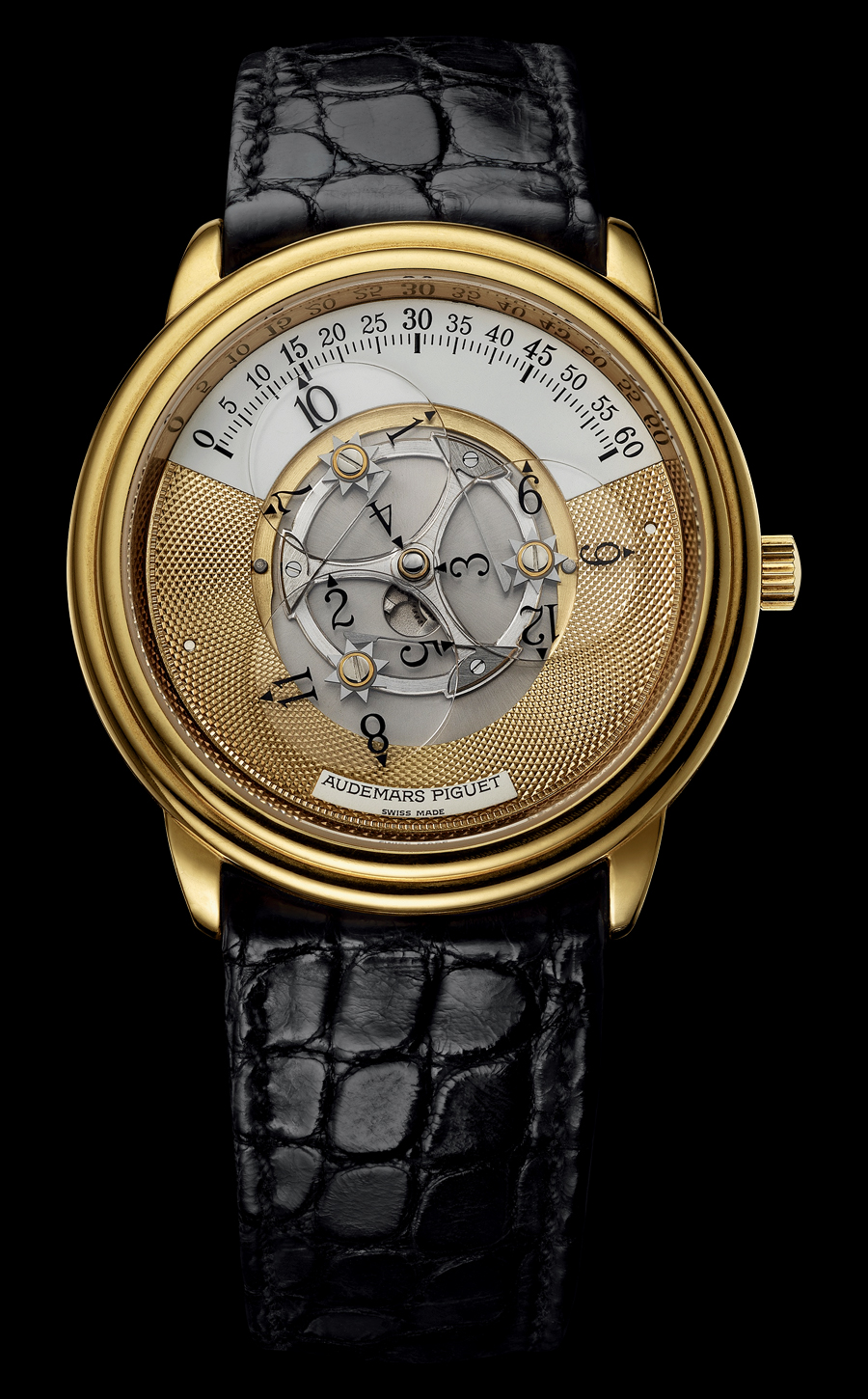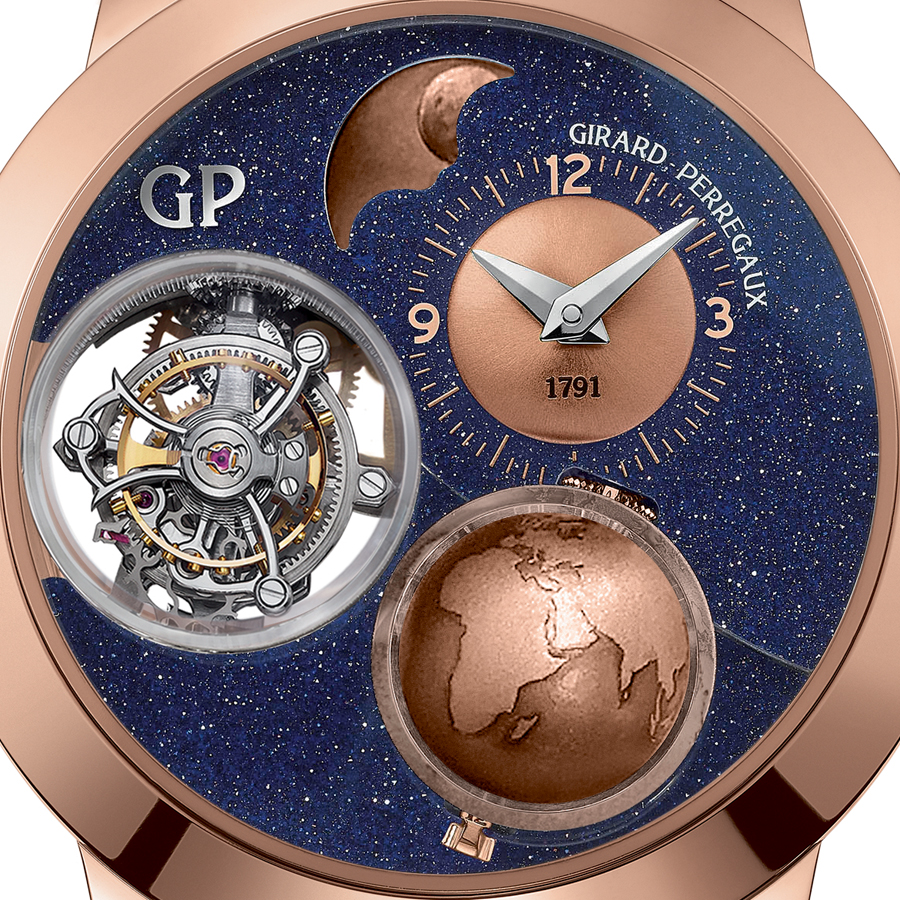Hypnotic dials in aventurine
Dear tick-tock authentic fanatics! To keep you waiting while he is at Watches and Wonders in Geneva, Frank has two exceptional watches with dials made of aventurine and calibres full of surprises to show you.
Aventurine… this name already takes you on a dreamy adventure. A story runs that this material (also called goldstone) was created by accident in a glass factory in Murano, Italy during the 13th century, while handling some materials. According to the story, copper filings fell into melted glass that was left to cool down, which led to the formation of tiny shining particles. Blue aventurine, which is reminiscent of a sky full of stars, is now obtained through a process of putting copper oxide and black cobalt into molten glass. Gravitating in this magical universe, the Code 11.59 Starwheel by Audemars Piguet and the Planetarium Tri-Axial by Girard-Perregaux.
AUDEMARS PIGUET, Code 11.59 Starwheel and the wandering hours

The wandering hours…
On this Code 11.59 by Audemars Piguet Starwheel, the dark, midnight blue aventurine dial is the background to another attraction much worthy of your attention: the wandering hours. Only reading about it is not enough: the magic is worth seeing.
This rather unknown horological complication uses three rotating discs fixed on a central wheel, gravitating along a minute scale arranged in the form of an arc, to display the hours. It was created in the 17th century after Pope Alexander VII specifically asked for help against his insomnia. Insomnia which worsened with each tick-tock of the clock. He turned to the Campani brothers and asked them for a night clock, which would make no noise but still be visible in the dark. And the wandering hours display clock was born. It would only get better and more modern with the passing of centuries to finally come back front page in the Audemars Piguet catalogue, with the introduction of the first wandering hours watch of this collection in 1991.



The secrets of the mechanism
This piece, which is the perfect fusion between traditional watchmaking and the innovating techniques of the Maison, is powered by a new-generation Starwheel movement.

Here, telling time is more fun and more original. A rotor placed in the centre completes a full rotation in three hours. On the rotor, three rotating discs, each displaying 4 numbers from 1 to 12, successively point to the minute scale arranged in the form of an arc, while the hour is running.

A design at the service of a beautiful complication
This 41-mm-diameter Code 11.59 by Audemars Piguet Starwheel is the combination of different precious materials. The case band and the crown are in black ceramic, the bezel, the lugs and the caseback are in grey gold, and the dial is in aventurine. This technical beauty, water-resistant up to 30 meters, is delivered with a black rubber strap with a slightly textured surface, which gives a sporty feel to this complication watch.

Price: €57,100
Click here to read the Code 11.59 by Audemars Piguet Starwheel full technical sheet.
AUDEMARS PIGUET WATCHES WEBSITE
GIRARD-PERREGAUX, Planetarium Tri-Axial
Want to buy it? We’ve got you: this watch is currently up for sale in Paris, at Dubail’s (link at the end of the article), “an address only shared among specialists who want to find one-of-a-kind watches”, as Frank Sans C likes to say. But what exactly is this watchmaking UFO?

The Planetarium Tri-Axial by Girard-Perregaux, the epitome of fine watchmaking watches, is the result of passionate, hard work by the manufacture’s best artisans. This feat of ingeniosity, research and development required thousands of work hours to achieve such watchmaking perfection. An exercise that seems almost easy to the Maison, for this is not its first time.
A little history, of the tourbillon…
The tourbillon, which was invented by Abraham-Louis Breguet, was created to get rid of the negative effects of gravity on pocket watches, which are always in a vertical position. With this configuration, the regulator always underwent the force of attraction in the same direction. The genious watchmaker created a cage which would ensure a permanent rotation: that way, the watch would be in multiple positions.
A three-way view, of the tourbillon…
Today, this complication has become more of a representation and a decoration than a true function, with the existence of wristwatches. For the rose gold, 48-mm Planetarium Tri-Axial, Girard-Perregaux chose a tourbillon evolving in three dimensions and at three different speeds: one minute, thirty seconds and two minutes. This permanent rotation can be seen at the front of the dial, but also at the back through the sapphire crystal caseback and from the side, which is revolutionary. The brilliant teams at the manufacture thought of creating a window on the case band to give a glimpse this gorgeous visual attraction. Given that the mechanism is made of 144 components but weighs only 1.24 grams… that is definitely on a dream scale.
And other complications…

This watch is no small-scale spectacle, with its miniature, hand-painted Earth globe in titanium. This true indicator of daytime and nighttime represents a 17th–18th century map which completes a whole rotation in 24 hours. A very discreet “12” lets you know where it is daytime (on the dial) and where it is nighttime (on the caseback) on the globe. To perfect the scene, the astronomical moon phase is inspired by the drawings of the Moon of the 17th century. Why astronomical? Because it only requires calibration and a one-day adjustment every 122 years. All these complications deliver perfect harmony of the three celestial bodies which evolve on a dial in aventurine, reminiscent of a starry night sky. A true watchmaking masterpiece, at a well-justified price for all these watchmaking feats.
Price: €372,000
Technical details:
Rose gold case, 48 mm
Thickness: 18.82 mm / 21.62 mm including the top of the spheres
Sapphire crystal caseback
Dial in blue aventurine
30-m water resistance
Mechanical movement with manual winding
Frequency of 21,600 V/h (3 Hz)
Number of parts: 386
64-hour power reserve
Functions: tri-axial tourbillon, hours and minutes, day and night, moon phases
Alligator leather bracelet
Triple-folding buckle in rose gold
Click here to read another version of the Planetarium Tri-Axial’s full technical sheet.
GIRARD-PERREGAUX WATCHES WEBSITE
See also:
Read also: